How to remove pet hair from fabric, laundry and clothes – 5 expert-approved tips for shedding season success
Banish hairs from your soft surfaces for a spotless space
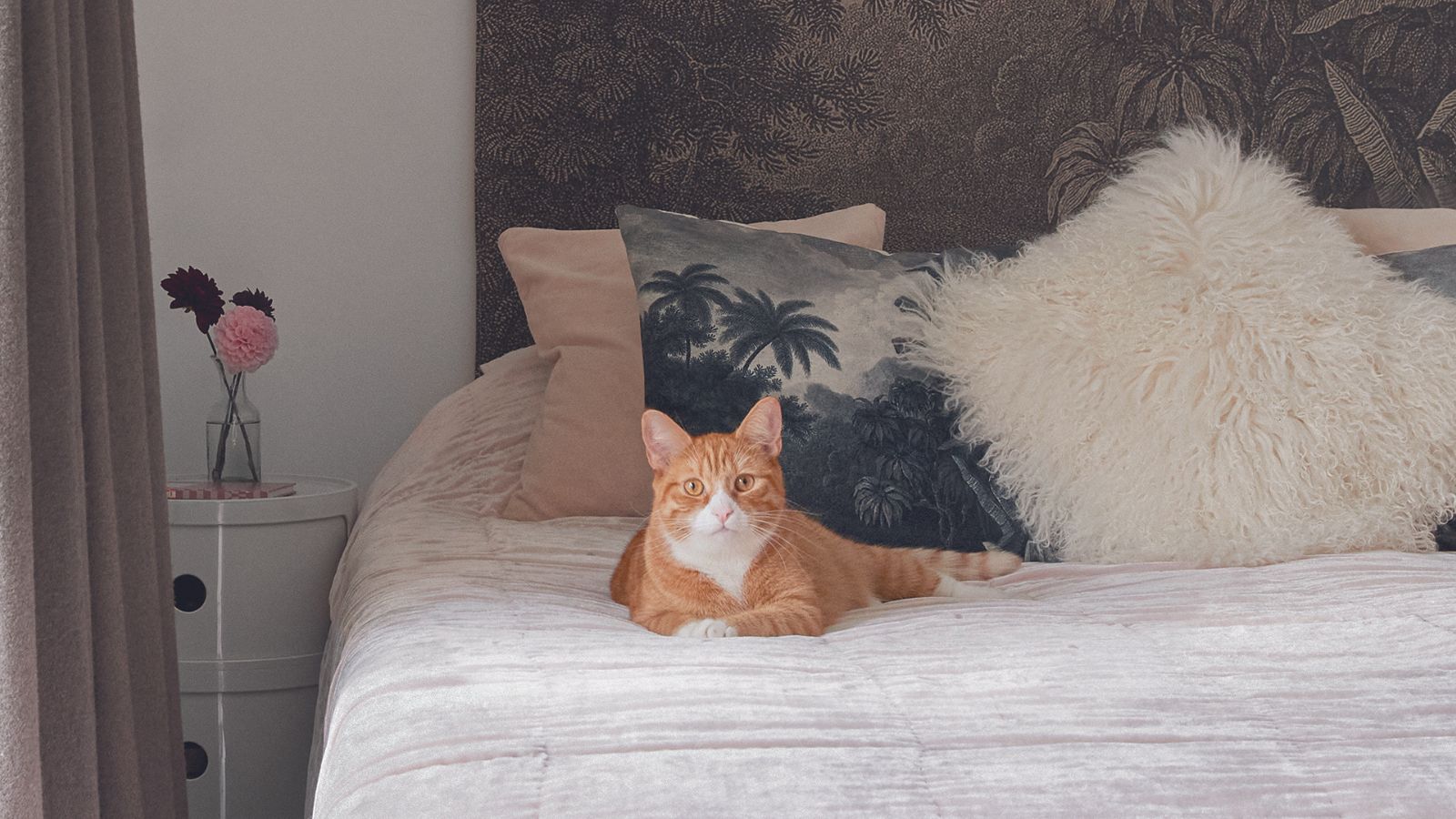

Chiana Dickson
As someone with four dogs at home, I love tips on how to remove pet hair from fabric, laundry and clothes. Now, during peak shedding season, it's needed more than ever.
Whether I am trying to get dog hair out of carpets, remove clinging hairs from laundry or looking for cleaning tips to fresh up the couches and chairs, removing pet hair once and for all can often feel like a never-ending battle.
So how do you remove pet hair from fabric and get it out of laundry? Here, cleaning and laundry experts share their top tips and tricks
How to remove pet hair from fabric, laundry and clothes
1. Use a lint roller

Lint rollers are a brilliant and effective way to remove pet hairs from all fabrics.
One of the easiest and most effective ways to loosen and remove pet hair from laundry and fabrics is by using a lint roller.
As Forrest Webber, owner of Bear Brothers Cleaning, the number one cleaning company in Huntsville, Alabama, says, 'Using lint rollers will work well on fabric sofas, chairs, and cushions, because the sticky sheets efficiently grab loose pet hair.
'The Scotch-Brite Lint Roller available at Walmart is a strong option with perforated sheets for easy tearing.' The Scotch-Brite Extra Sticky Lint Roller, also available at Walmart, is made specifically for pet hair pick-up.
As well as being useful to remove lint from clothes, these will also come in handy to remove pet hair from laundry if your clothing is coming out of the washing machine and dryer with residual, clinging hairs, suggests Muffetta Krueger, cleaning expert and owner of Muffetta’s Domestic Assistants. This is a real gripe in my household.
According to Muffetta, the best way to go about this is by tackling each item as and when you wear it, which is how I tend to get around this common nuisance.
'Alternatively, you can use a lint brush with soft bristles to remove pet hair from fabric, such as the OXO Good Grips Furlifter Pet Garment Brush Hair Remover For Clothing available at Amazon,' she says. 'Repeat this process until you've successfully eliminated all visible hair.'
In a pinch, you can also use sticky tape if you don't have a lint roller at home. All you need to do is roll the tape around your hand so the sticky side is facing outward and rub your hand over the fabric furniture to clothing to collect the hair.
If you're conscious of being sustainable at home, however, opting for a reusable brush such as the self cleaning OXO Good Grips FurLifter from Walmart is a great option, as traditional lint rollers need frequent replacing, and cause a large amount of non-recyclable waste, just like sticky tape.
This is something that Chiana Dickson, content editor on Solved, was battling with when regularly looking after a black cat and German Shepherd.
'In an effort to be more sustainable, I decided to give a washable, reusable lint roller, available at Amazon a go instead,' she says. 'It worked exactly like a normal lint roller for both my furniture and clothing, and all I had to do was rinse it in the sink afterward, collecting the hair in a hair trap, and leave it to dry.
'This meant that I had to pause in between removals, but there are other lint rollers and rakes available that reduce this waiting time. Overall, it was super efficient and collected a lot more hair than I thought it would before it needed cleaning.'
2. Vacuuming

Vacuuming works effectively on floors and upholstery, but won't be suitable for clothing.
Another efficient way to remove pet hair from fabric is by vacuuming furniture without damaging upholstery, which is something that I do all the time at home, with our best vacuum for pet hair.
We took the plunge on a Miele Blizzard CX1 Cat & Dog Bagless Canister Vacuum available at Amazona while ago, and have never looked back. Despite the high-end price point, it was truly worth the spend for it's brilliant pet hair cleaning from carpets, upholstery and even curtains, which it has a softer suction setting for.
Forrest says, 'A vacuum with the best pet-specific attachments lifts embedded pet hair from sofas and chairs. The Dyson Ball Animal 3, available at Dyson, has a tangle-free turbine tool that efficiently removes hair from fabric surfaces.'
This will work to remove the bulk of hair on couches, carpets and chairs, but on bedding, a few hairs may remain, and I've found a handheld option or lint roller will work far more effectively. Importantly, this also won't work to remove pet hair from laundry, or to remove pet hair from clothes, but is a good option for quick cleaning in certain areas.
3. A pet brush
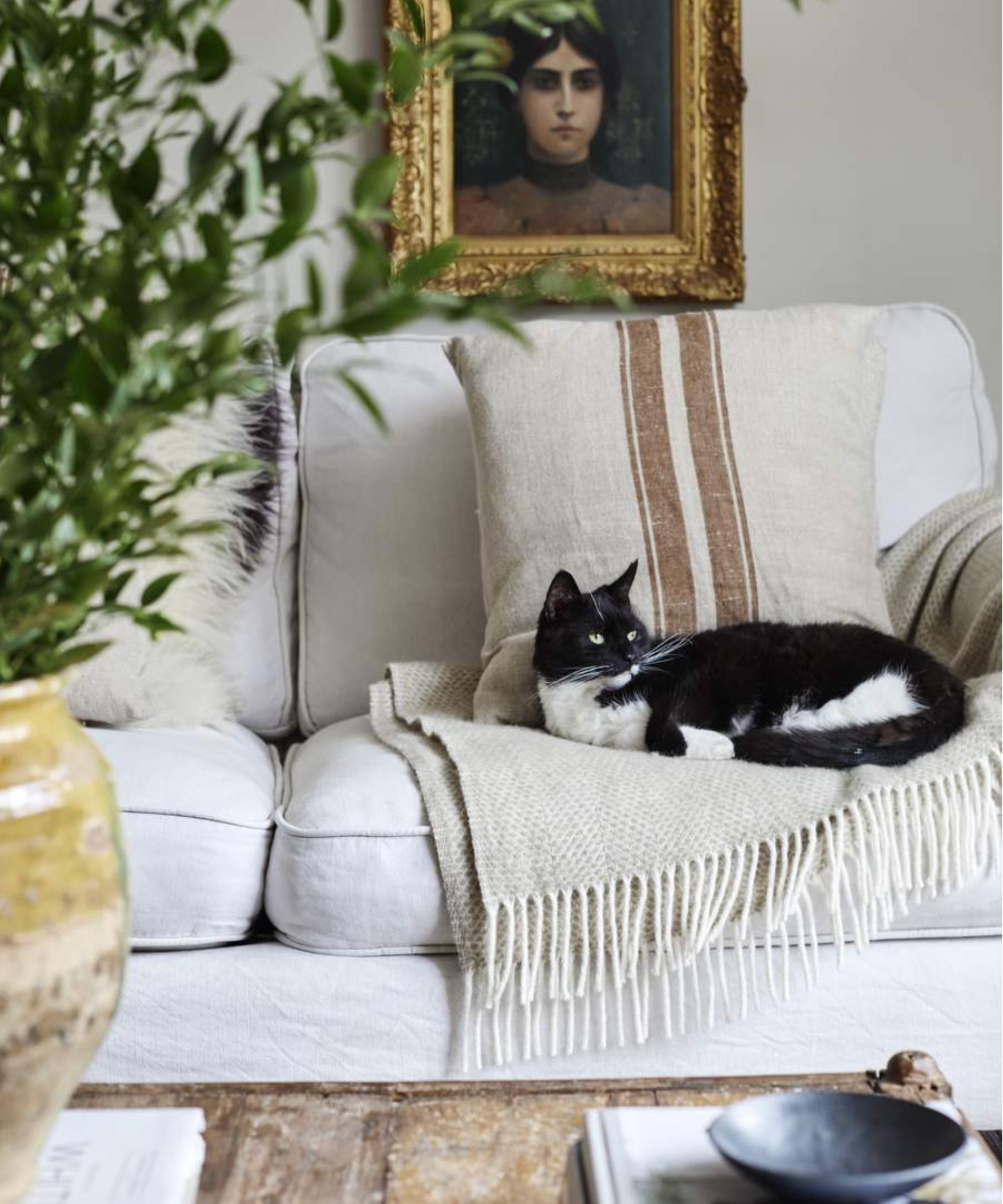
Use pet hair rakes to remove embedded hairs.
I use a pet brush to collect pet hair from my dogs before it has the chance to settle all over my home, and it's one of the pre-preemptive ways I keep my home clean with pets.
So, why not try it out for fabrics? This is a clever tip Chiana picked up from a friend, after she saw her using her dog's rake to pull embedded pet hair out of the carpet, and tried for herself.
'I used the cat’s softer bristled brush to tackle the hair on my blankets, pulling the material taut before brushing the fabric as I would the cat,' she says. 'The hair was picked up almost instantly, but the results will vary depending on the type of brush you have,' as well as the breed of dog or cat you have.
'An undercoat rake will, for instance, be more effective at dealing with pilled fabrics like carpets, whereas the soft brush is ideal for cleaning upholstery and clothes without damaging them,' she adds.
Therefore, a pet brush, such as the Maxpower Planet Original Pet Grooming Rake available at Amazon, or the softer Swihauk Self Cleaning Slicker Brush, also available at Amazon, is a cleaning essential worth the spend for pet owners, for removing pet hair from laundry, clothes and fabrics.
You can also, of course, use a specifically designed carpet rake, such as the MR.SIGA Pet Hair Removal Rubber Broom available at Walmart.
4. An anti-static spray

Anti-static spray prevents fibers from re-settling on fabrics.
Anti-static sprays present a great all-round solution if you're wondering how to remove pet hair from fabric, laundry and clothes, preventing small particles and fibers from sticking to all kinds of fabrics. These, such as the Static Guard Anti-Static Spray available at Walmart, recommended by Forrest, can be purchased online or in store, but you can also, like Chiana, make your own.
'To do this, I combined two tablespoons of fabric softener with one cup of water and a tablespoon of rubbing alcohol in a spray bottle and shook to combine,' she says. We recommend the eco-friendly LiBa Glass Spray Bottles available at Walmart for this. 'This anti-static spray is not too dissimilar to a homemade cleaning spray to repel dust, as both work to charge the fabric to push away particles and stop them from sticking.
'I liberally applied the spray to any areas with hair, but had to combine it with another removal method (I chose the vacuum) to collect the hair. I must say that there was certainly a difference in how much hair was collected with the spray than when I used the vacuum alone.
'All in all, an anti-static spray will remove hair in conjunction with another removal method such as the lint roller or vacuum, but I think it is a better preventative tool to prevent hair from sticking fast in the first place. If you do make a homemade spray, be sure to use a small amount of fabric conditioner as it increases flammability and could stain.'
This is particularly important when removing pet hair from clothes, with a quick spritz before following up with a lint roller or brush.
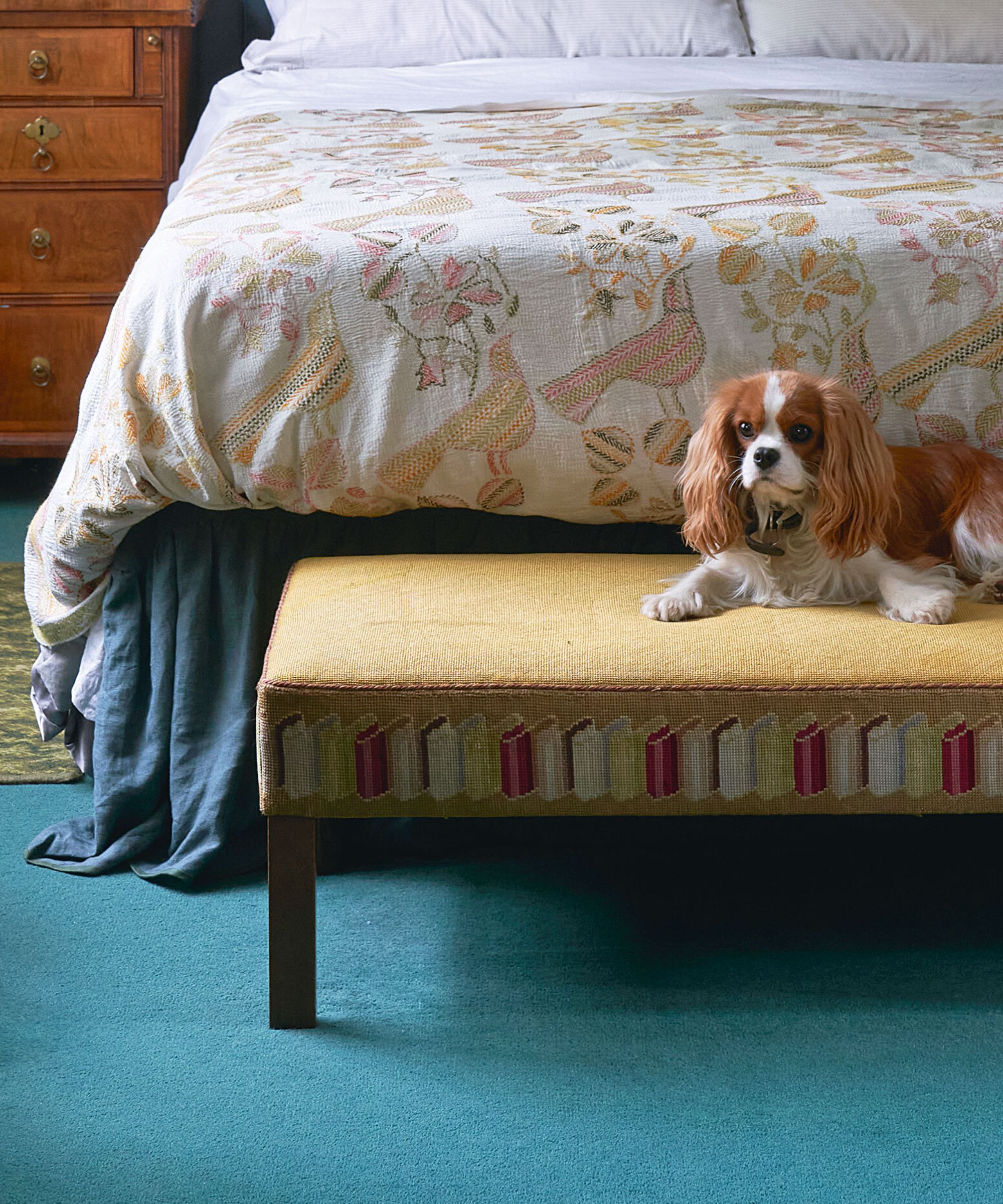
Using vinegar in your washing machine and dryer balls in your tumble dryer can help to significantly reduce static cling.
Additionally, while many of us may have heard of using white vinegar in laundry to help deodorize clothes, there are several benefits this pantry staple offers to remove pet hair from laundry, reveal Joshua and Ashlie Waterman, co-founders of Stripped Down Laundry.
In fact, they explain, adding just ½ a cup of distilled white vinegar to a large load of laundry can help to relax the clothing fibers and reduce the laundry's pH, resulting in less static cling and helping to reduce the amount of fur that clings on you.
‘Static cling is usually caused by alkaline laundry detergents, and the clothes rubbing against one another as the machine cycles,’ they say. ‘Reducing this with vinegar will stop the hair gluing itself to your garments, so to speak, allowing it to be washed into your lint trap for easy removal.’
Then, they suggest, ‘Add dryer sheets, or better yet use dryer balls, in your tumble dryer once again to reduce static – wool dryer balls moistened a little with water are best for this,’ they say, and are also one of the best ways to get wrinkles out of clothes, too. The number one bestselling Handy Laundry Wool Dryer Balls are available at Amazon.
If you don't have a dryer ball or sheet to hand, then Joshua and Ashlie warn against turning to quick household hacks, such as using an aluminum foil ball, in their place. These not only won't help with your pet hair problem but can actually cause damage to your drum and clothing with their rough edges.
'Instead, you can run clothing through the dryer on an air dry cycle for about 10 minutes before washing, they suggest, to help loosen and dislodge pet hair, making it easier to remove during the subsequent washing process.
And, when it comes to removing pet hair from laundry and clothes, it's also crucial to keep your washing machine clean, as all removal methods will be redundant if the inside of your washing machine and tumble dryer are coated in tricky pet hair, says Stuart Pyburn, franchise consultant, and appliance expert at Mr. Appliance, a Neighborly company.
‘It really pays to clean a washing machine once in a while, especially when you have pets, as the hair will stick around inside the drum for several washes, adding hair to clothes that may have previously been relatively hair free,’ he advises.
5. Rubber gloves
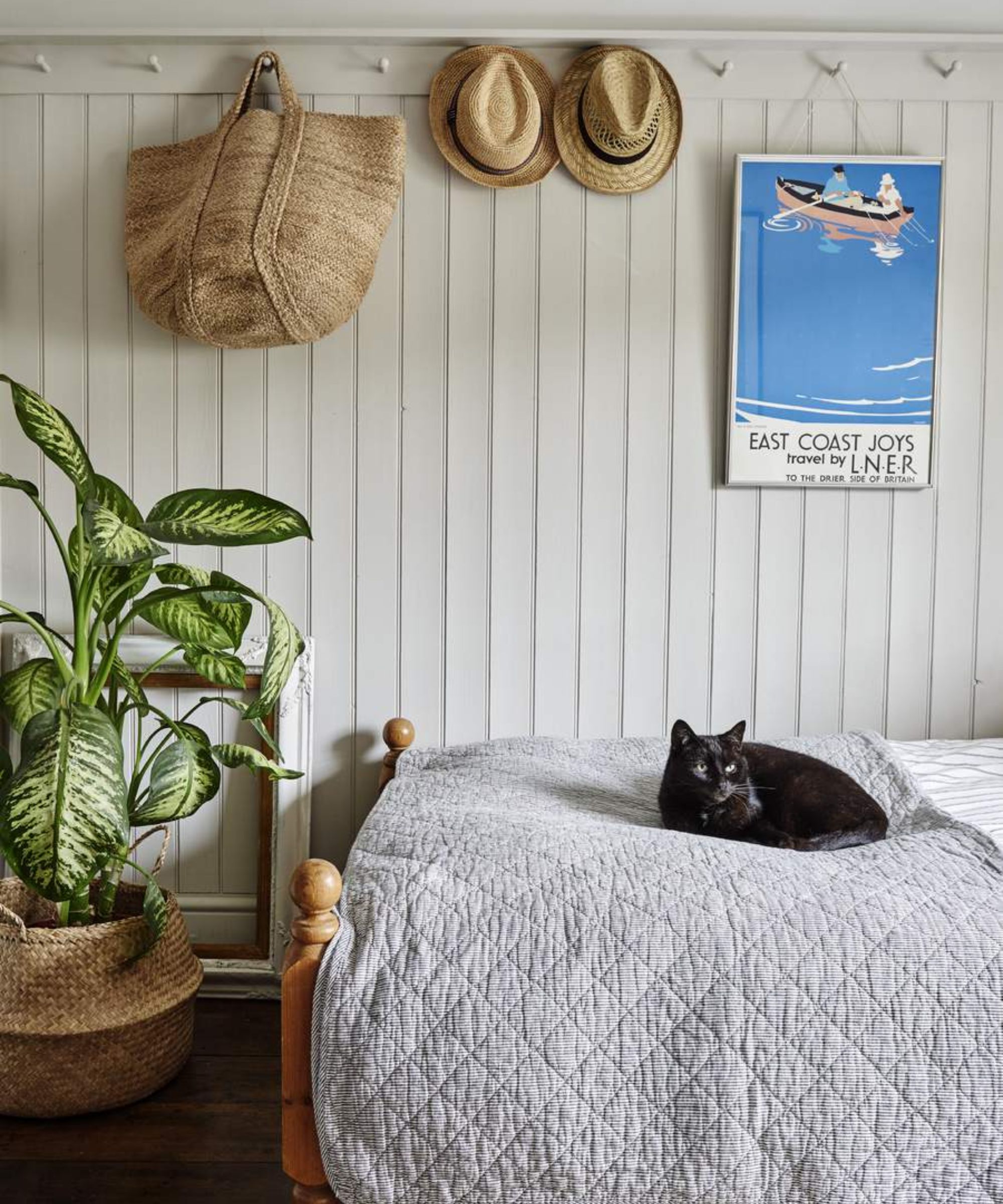
Rubber gloves are useful for more than just washing your dishes.
Finally, as Forrest suggests, you can also use rubber gloves to remove pet hair from fabric, laundry and clothing.
'Slightly wet a rubber glove and rub it over the fabric,' he says. 'Static and friction will lift pet hair into clumps for easy removal.
'Any textured dishwashing glove works, but the Mr. Clean Bliss Latex Free Gloves available at Walmart have a good grip and durability.' Then, simply vacuum up any clumped fur and dander.
What to shop
All prices were correct at the time of publication.
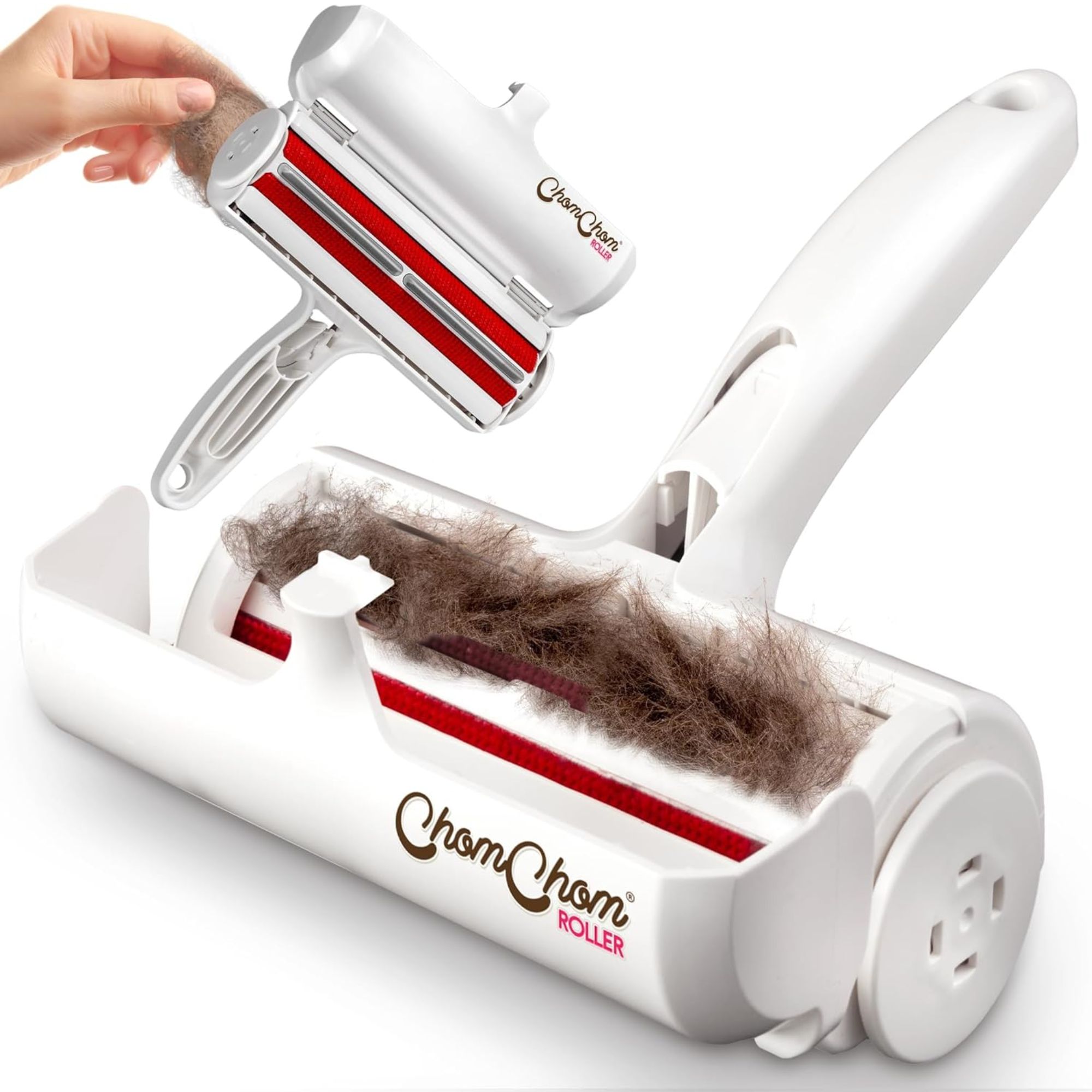
This reusable lint roller is designed especially for pet hair, with a handy compartment collecting loose hair for easy removal.
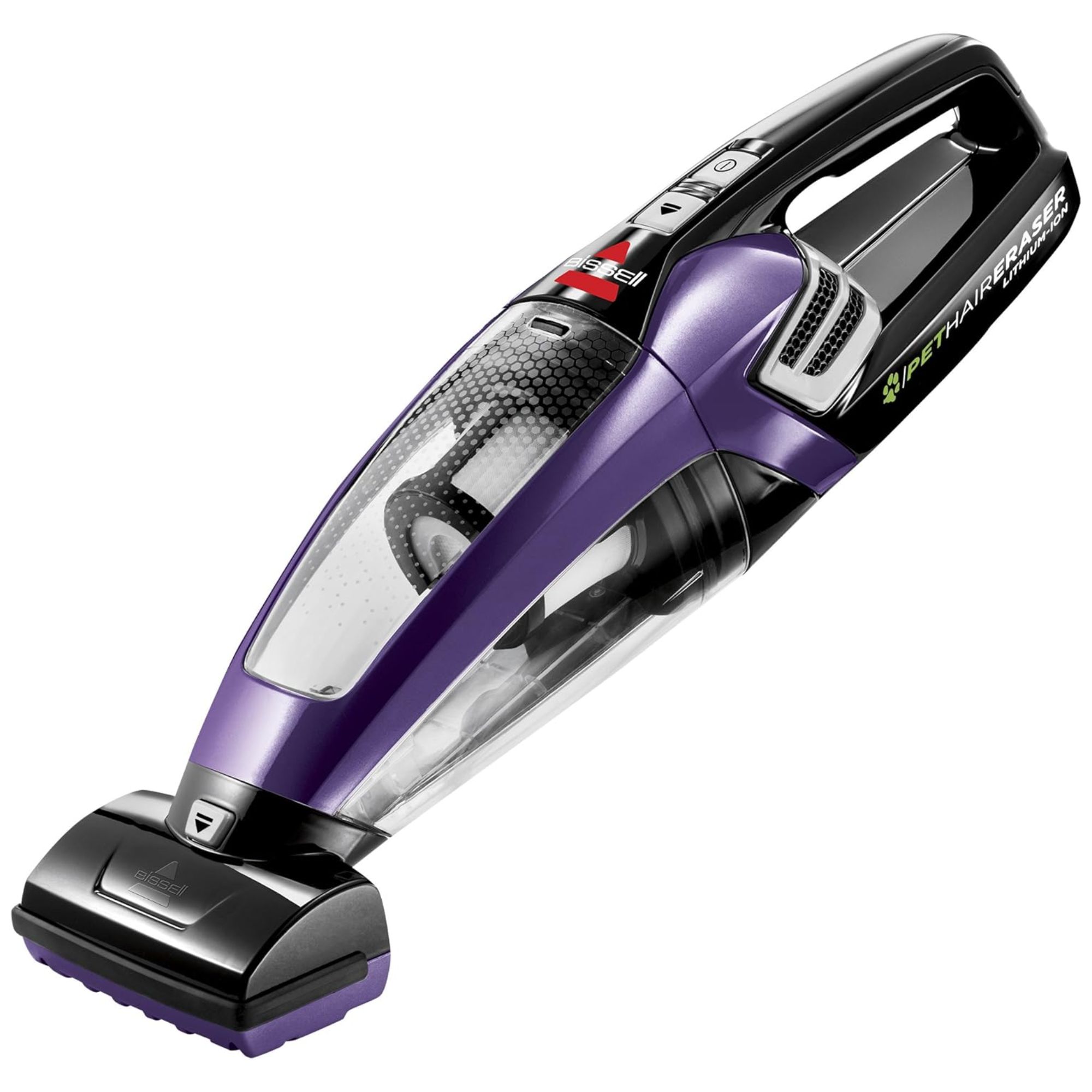
The Bissell Pet Hair Eraser is a great small handheld vacuum for removing embedded dirt and pet hair thanks to its motorized brush tool and is one of our favorite handheld options on the market. What's more, Bissell donates up to $10 dollars to the BISSELL pet foundation for every pet product purchase, upon activation.
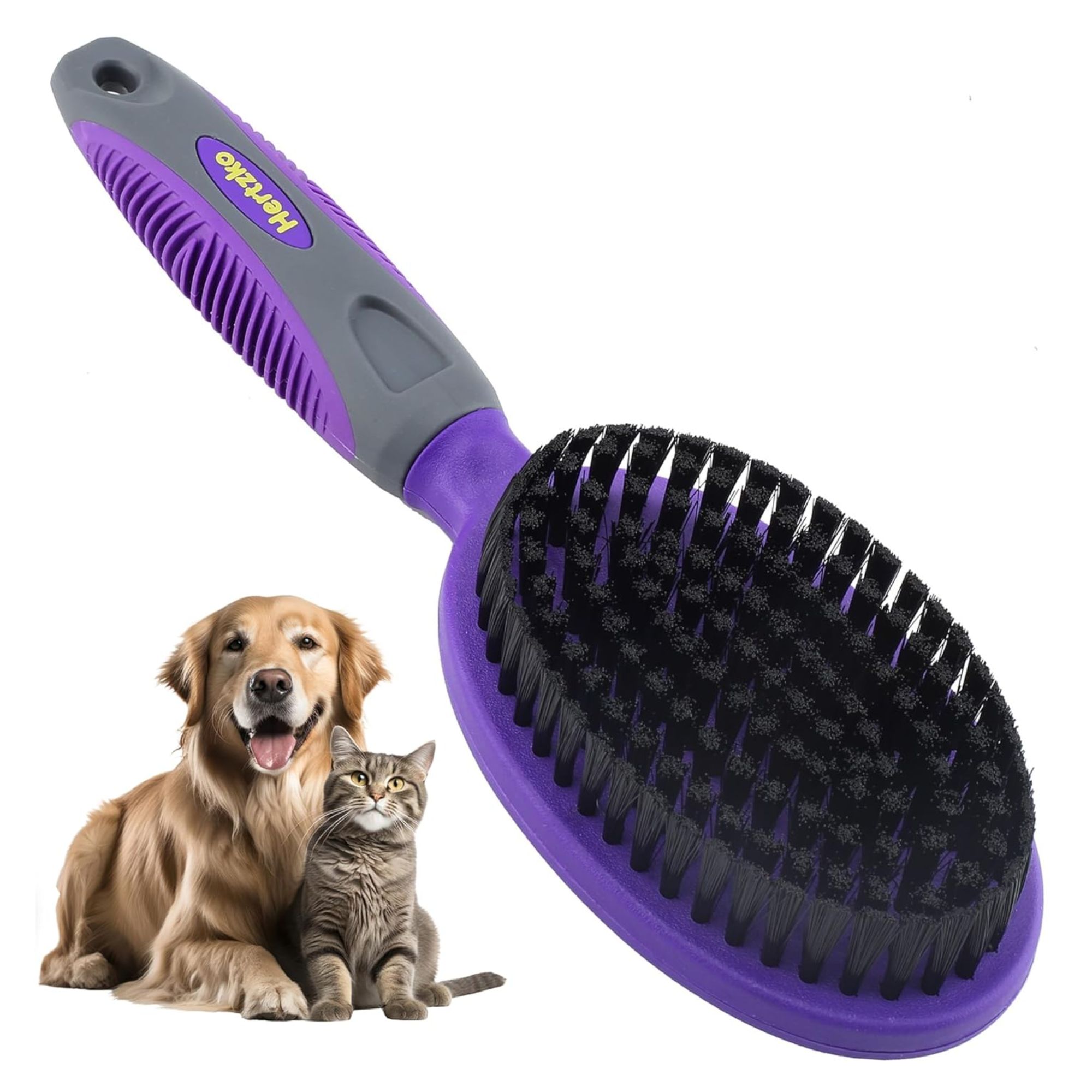
This soft pet grooming brush is designed for animals with long hair to help remove knots carefully. The soft bristles mean it is also ideal for picking up pet hair around your home without scratching or pulling any fibers from fabrics.
Meet our experts

Muffetta Krueger is a driving force in the domestic service business, with over 15 years of operational management experience in the industry.

Bear Brothers Cleaning has been featured on Martha Stewart, The Spruce, Real Simple, Architectural Digest, and more.
FAQs
Can pet hair ruin a washing machine?
Pet hair can clump up when exposed to water and clog up the pipes, drum, and filters in your washing machine, leading to premature signs it's time to replace old appliances.
As a result, it is best to try to remove as much pet hair as possible before washing your clothing and home linens to help keep your washing machine working properly and prevent fire hazards.
This is especially important if you have a combination washer and dryer. Clean your dryer vents regularly of collected dust and fur.
What breaks down dog hair in a washing machine?
Besides white vinegar, there are some commercial pet hair dissolvers that can be used to physically break down hair in a washing machine when running a cleaning cycle.
This hair will then be caught by the lint trap more easily, or washed away into the drains. The Uproot Clean Washing Machine Cleaner Tablets available at Amazon are a good example of this.
If you share your home with furry friends, our cleaning supply checklist for pet owners details everything you need to keep a spotless space.
Sign up to the Homes & Gardens newsletter
Design expertise in your inbox – from inspiring decorating ideas and beautiful celebrity homes to practical gardening advice and shopping round-ups.

Ottilie joined Homes & Gardens last year, after finishing a Master's in Magazine Journalism at City, University of London. With previous contributions in Livingetc and Motorsport Magazine, she produces content for the Solved section on the website, focusing on clever tips and tricks to keep your home beautiful, organized and clean. She also has an undergraduate degree in English Literature and History of Art from the University of Edinburgh, where she developed a love for inspiring interiors and architecture.
- Chiana DicksonContent Editor
You must confirm your public display name before commenting
Please logout and then login again, you will then be prompted to enter your display name.
-
 'Big results before you know it' – Experts urge you to use the ‘Take Away 10’ method for simple decluttering with zero decision fatigue
'Big results before you know it' – Experts urge you to use the ‘Take Away 10’ method for simple decluttering with zero decision fatigueIt can cut hundreds of items from your home in just a few weeks
By Ottilie Blackhall
-
 Kevin Bacon and Kyra Sedgwick's rustic kitchen island is stunning, but controversial – designers say you can get the look without the hassle
Kevin Bacon and Kyra Sedgwick's rustic kitchen island is stunning, but controversial – designers say you can get the look without the hassleA popular material finds an unorthodox home in the couple's kitchen, but experts disagree on whether it should be used – here's how to do it instead
By Sophie Edwards
-
 I've spent over 200 hours testing vacuums and swear by my two Dysons – this is how I properly clean a Dyson vacuum filter for longer-lasting appliances
I've spent over 200 hours testing vacuums and swear by my two Dysons – this is how I properly clean a Dyson vacuum filter for longer-lasting appliancesYour Dyson vacuum will last much longer and clean at its best
By Dan Fauzi
-
 Do cleaning products expire? Professional cleaners warn time could make them ‘less effective, and in some cases, irritating to use’
Do cleaning products expire? Professional cleaners warn time could make them ‘less effective, and in some cases, irritating to use’For the best results, it pays to stay on top of the timeline of your cleaning products
By Chiana Dickson
-
 How to clean a patio – 6 different methods, and when you must use a chemical cleaning agent
How to clean a patio – 6 different methods, and when you must use a chemical cleaning agentFrom manual scrubbing, natural solutions or calling in the pros, industry experts reveal the benefits and considerations of each method
By Andy van Terheyden
-
 5 surprising but brilliant ways to clean with old socks – from perfectly buffing stainless steel to deterring pests naturally and more
5 surprising but brilliant ways to clean with old socks – from perfectly buffing stainless steel to deterring pests naturally and moreTackle dust in tricky corners, clean your mirrors and even banish bad odors with those rogue single socks
By Andy van Terheyden
-
 5 things people with clean upholstery always do – simple, quick and oh-so-effective
5 things people with clean upholstery always do – simple, quick and oh-so-effectiveEnsure your furnishing looks clean year-round with these expert tips
By Seraphina Di Mizzurati
-
 'Wick away the ick' – 6 things people with clean laundry rooms always do to make this hardworking space shine
'Wick away the ick' – 6 things people with clean laundry rooms always do to make this hardworking space shineThese tips on how to clean your laundry room will banish grime
By Seraphina Di Mizzurati
-
 How safe are carpet deodorizers? As a seasoned vacuum tester, I urge you to try alternative methods
How safe are carpet deodorizers? As a seasoned vacuum tester, I urge you to try alternative methodsNatural cleaning is always the answer
By Dan Fauzi
-
 'The world will not end' – 5 cleaning habits to quit for a happier, easier life, and what to do instead
'The world will not end' – 5 cleaning habits to quit for a happier, easier life, and what to do insteadGet your home sparkling, minus the stress
By Ciéra Cree
